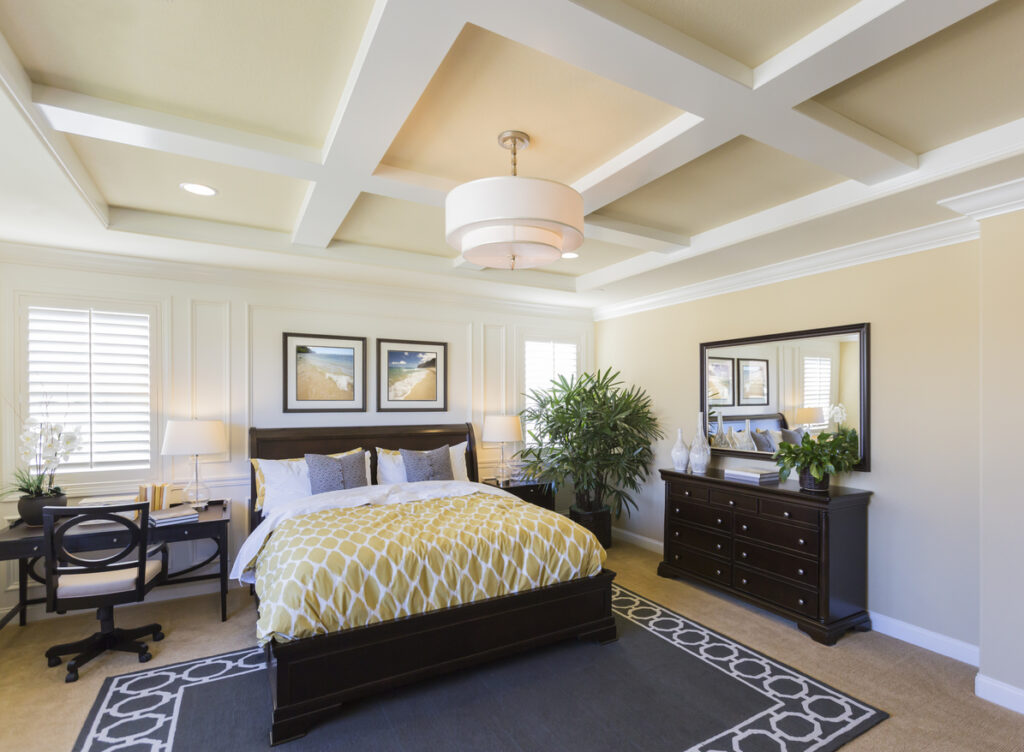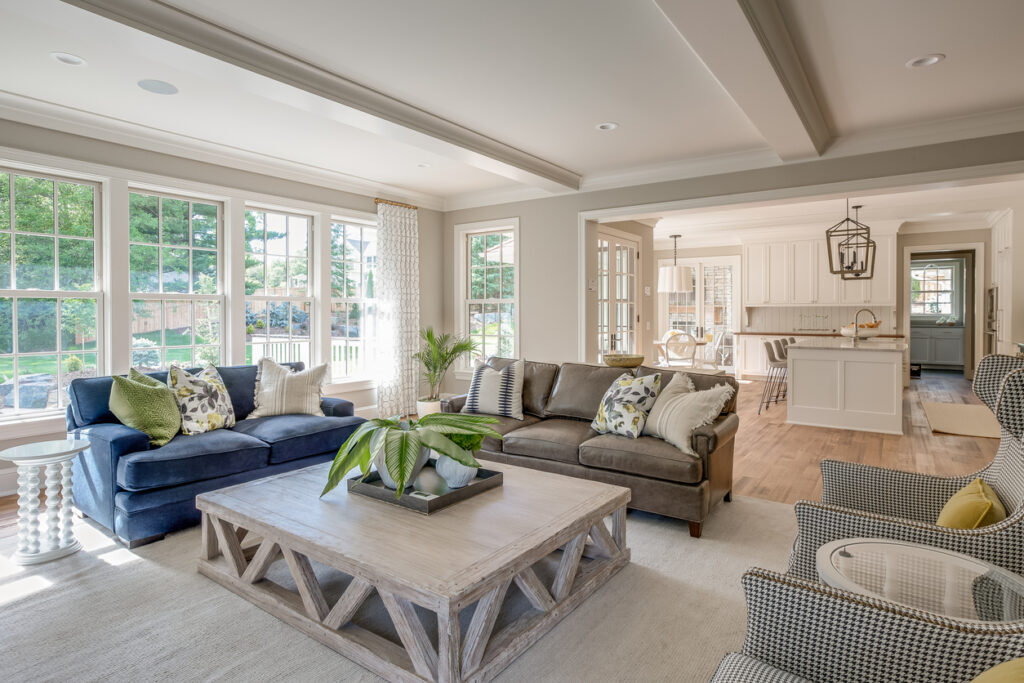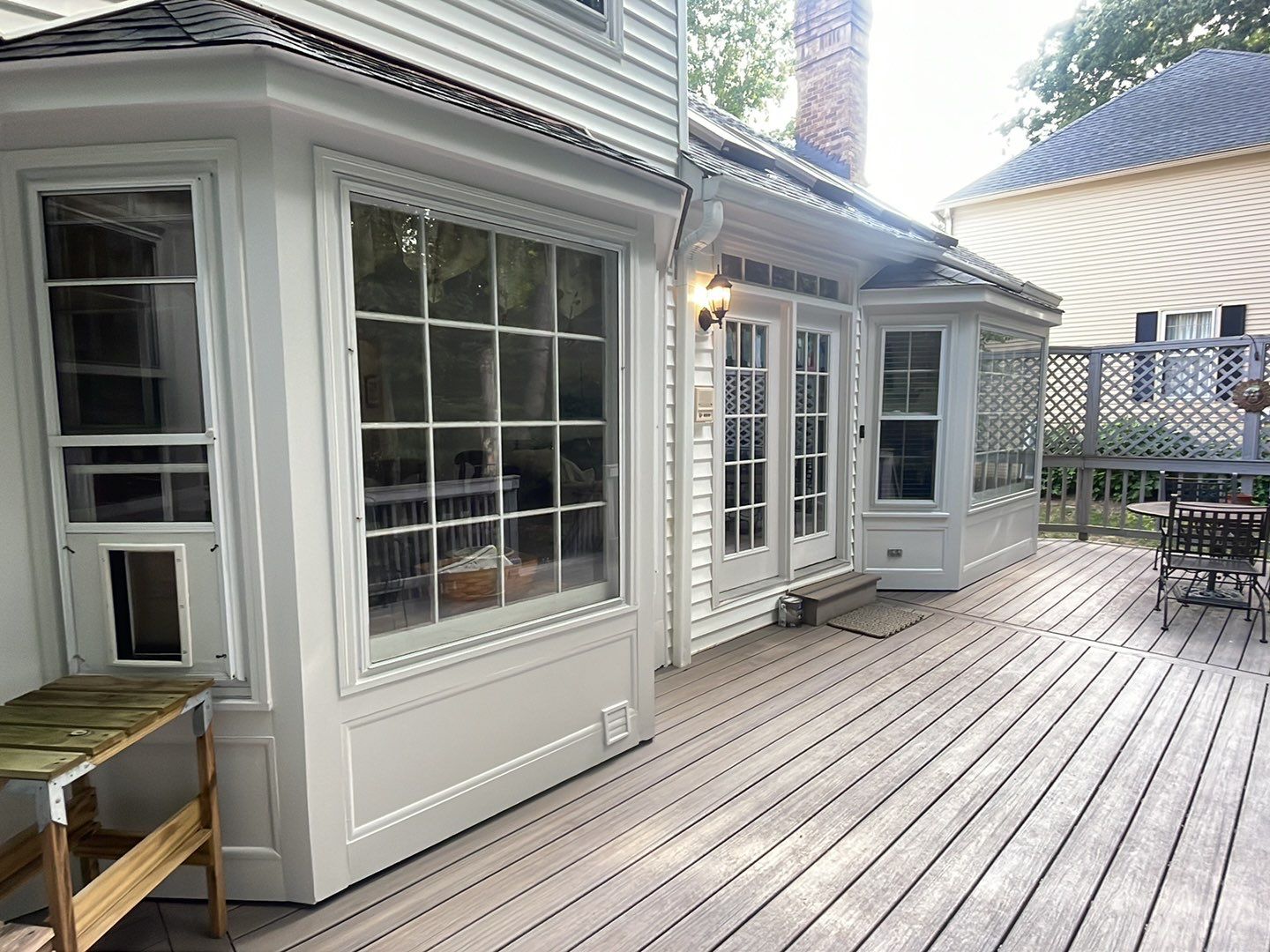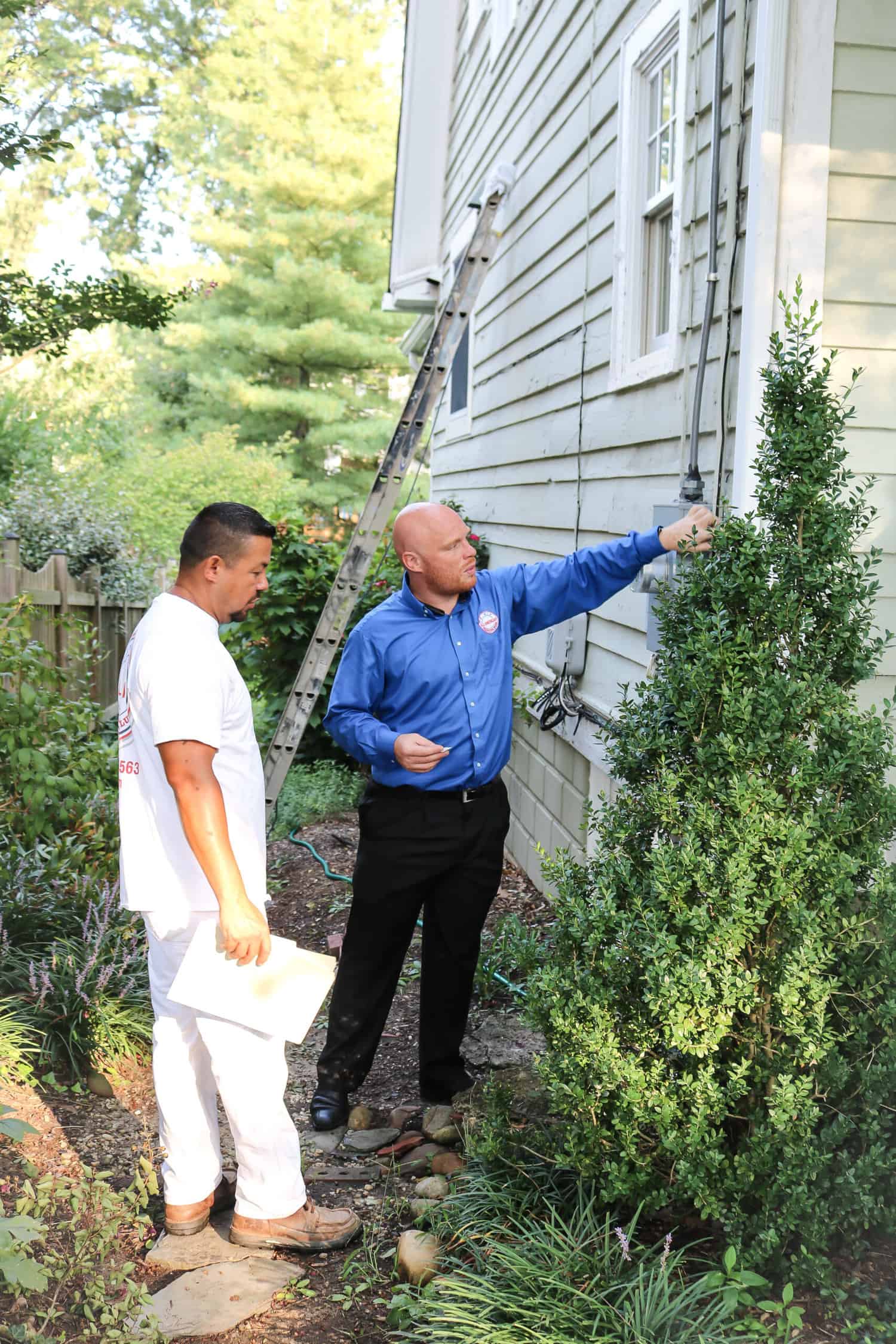As interior residential painters, one of the questions we often get is whether to paint trim or walls first. This choice can greatly affect the efficiency and outcome of a painting project. Understanding the best approach can help ensure a smooth and successful paint job.
This blog post simplifies this crucial decision. It delves into the pros and cons of each approach, ensuring you make an informed choice that suits your skill level and project needs. Whether you’re a DIY enthusiast or preparing for a bigger renovation, this blog post will equip you with the knowledge to approach your painting project with confidence and efficiency.
Paint Trim or Walls First? Here’s What We Think

Why Sequence Matters
The overall quality and ease of your project hinges on the order in which you paint. Choosing whether to start with trim or walls can affect the amount of prep work and the precision required during painting.
The Case for Painting Trim First
Painting the trim before the walls can be a smart move for several reasons. Firstly, it allows for a more polished finish, especially around the edges. This method means you can apply paint to the trim without the stress of accidentally marking the walls. Any drips or splatters that land on the wall are no big deal – they’ll simply be painted over when you tackle the walls later. This approach is particularly helpful if you’re not very experienced with a paintbrush, as it forgives minor mistakes.
Another significant advantage of painting the trim first lies in the ease of preparation. When it comes to taping, it’s generally simpler and quicker to tape off walls than it is to tape off trim. Walls are usually larger and flatter, making it easier to get the tape straight and secure. This not only speeds up the prep process but also results in cleaner, more precise lines where the trim and walls meet. The result is a neater, more professional-looking finish.
Furthermore, by painting the trim first, you’re effectively setting the tone and style for the space. Trim often includes detailed work, and having it freshly painted can provide a clear visual boundary, helping to guide the subsequent wall painting. This method can also allow for a better assessment of how the final colors will interact, as the contrast between the new trim color and the old wall color can offer valuable insights into the desired ambiance and aesthetic of the room.
The Case for Painting Walls First
Many people prefer to paint the walls first and it’s easy to see why. This method covers the largest surface area of the room right away, giving a sense of immediate transformation and accomplishment. When you start with the walls, the impact of the new color is quickly visible, offering a motivating preview of how the room will look once the project is complete. This can be especially encouraging in larger spaces where the change is more dramatic.
Another advantage of painting walls first is the reduced need for precision around the trim. This approach can be less stressful, particularly for those who may not have a steady hand or are less experienced with detailed painting work. If any wall paint accidentally gets on the trim, it’s not a problem – it will simply be covered when you paint the trim later. This makes the painting process more efficient because it allows you to focus on covering large areas without worrying about minor slip-ups along the edges.
Furthermore, painting the walls first can inform your approach to the trim. Once the walls are done, you have a clear backdrop against which you can choose the best trim color. This can be particularly useful if you haven’t fully decided on your color scheme, as the completed walls can inspire choices for the trim that either complement or contrast effectively.
In addition, tackling the walls before the trim can sometimes make the overall project simpler. Since walls are usually painted with rollers, which cover large areas quickly, you can complete the bulk of the painting in a shorter time frame. Then, when it’s time to paint the trim, you can switch to smaller brushes for more detailed, controlled work, ensuring a crisp and clean finish.

Whether You Paint Trim or Wall First, Quality Tools Matter
Regardless of whether you start with the trim or the walls, the quality of your brushes and rollers is important. High-quality tools are designed to hold and distribute paint more evenly, which is crucial for achieving a consistent and professional-looking finish. They help in laying down a smoother coat of paint, which is essential for both appearance and durability.
Good quality brushes and rollers significantly reduce the likelihood of issues like bristle loss or lint being left behind on your painted surfaces. Cheaper tools often shed their bristles or fibers, leading to a rough and unattractive finish that requires additional time and effort to correct. Investing in better tools can save you from the hassle of picking out bristles or dealing with uneven textures.
If you’re looking to buy brushes for your next interior painting project, you might want to read our blog on choosing the best paint brush for trim.
Preparation is Key
Cleaning Surfaces
The importance of starting with a clean surface cannot be overstated. Dust, dirt, and oils that accumulate on walls and trim over time can interfere with paint adhesion, leading to a less than satisfactory finish. Cleaning the surfaces ensures that the paint adheres properly and lasts longer. It also prevents imperfections like bumps or spots in the finished paint job.
Sanding for Smoothness
Sanding is a critical step, especially when dealing with trim or surfaces with existing layers of paint. Sanding helps to create a smooth base for the new paint to adhere to. It also helps to even out any existing imperfections, such as drips or brush marks from previous paint jobs. A well-sanded surface ensures a sleeker and more professional finish.
Tips for a Flawless Finish
Patience with Drying
- The Importance of Drying Time: One of the key factors in achieving a flawless finish in your painting project is allowing adequate drying time. This is particularly crucial when transitioning between painting the trim and the walls. Paint needs time to dry fully to achieve its final color and texture. If you rush this process and start on the next area too soon, you risk ruining the work you’ve already done.
- Avoiding Smudges and Sticking: Wet or tacky paint is prone to smudging, which can occur if you accidentally touch the area or if the tape used for masking pulls off the paint. Additionally, if the trim is not completely dry before you tape it to paint the walls, the tape can stick to the paint and peel it off when removed, leading to a messy, unprofessional look and the need for touch-ups.
Attention to Detail
- Using the Right Tools for Precision: When painting areas where the trim meets the wall, the choice of brush is critical. A smaller, angled brush is ideal for these parts. Its design allows for more controlled and precise paint application, ensuring clean, straight lines and a crisp finish. This level of detail can greatly enhance the overall appearance of the room.
- Achieving a Professional Look: The difference between a DIY and a professional-looking job often lies in the attention to detail. Taking the time to carefully paint around edges, corners, and junctions between different surfaces can elevate the quality of your work. It’s these finer details that catch the eye and create a polished and refined final result.
Here’s a short video tutorial from Home Depot on how to paint trim:
Paint Trim or Walls First: What’s It Going to Be?
So, should you paint trim or walls first? Well, it depends on your skill level and the specific requirements of your project. Both methods have their merits, and understanding these can help you make an informed decision for a beautiful outcome.
For personalized advice or professional painting services, All American Painting Plus is here to help. Our team’s expertise can guide you to the best choices for your home improvement projects.
Call us today at (703) 686-8988 for a free consultation and estimate.











